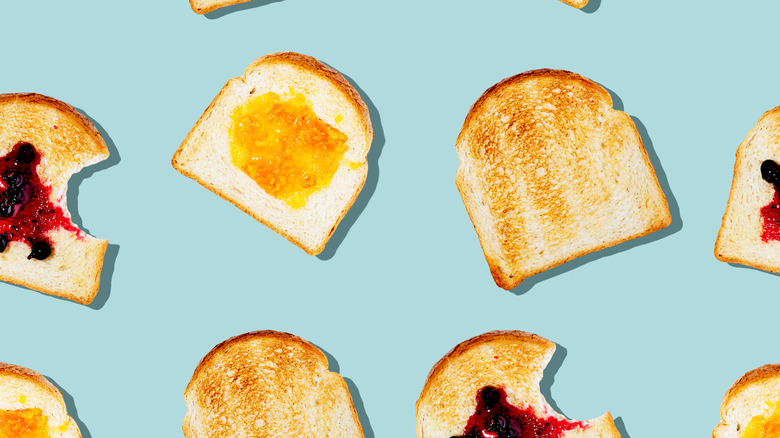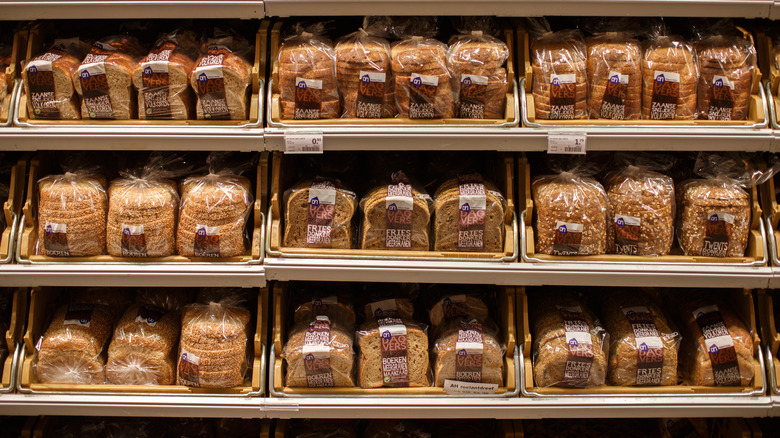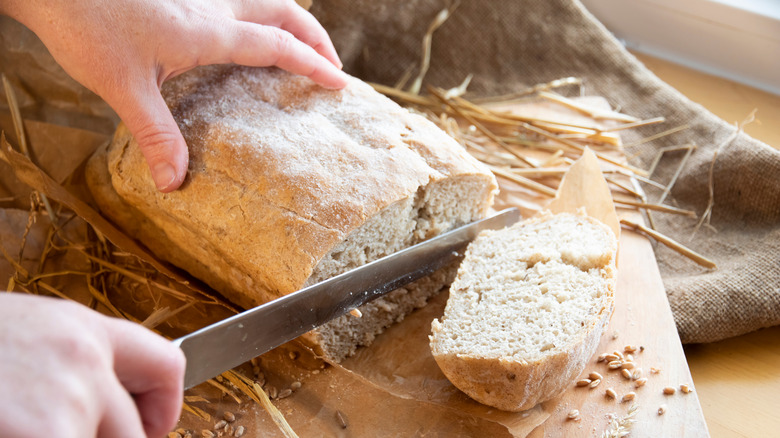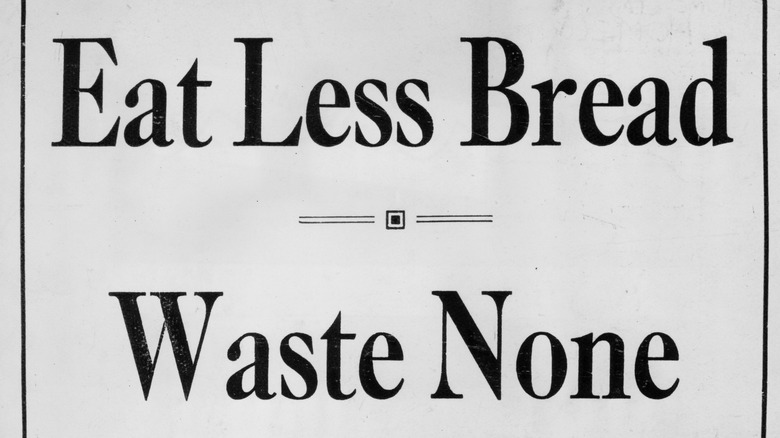The Surprising Effect WWII Had On Sliced Bread
According to Gold Medal Bakery, bread dates back to over 30,000 years. Sliced bread, however, is a relatively modern invention. History writes that it first became available in Chillicothe, Missouri in 1928. This all thanks to Otto Rohwedder, an Iowa man who created the first bread slicing machine. To keep the bread fresh, ThoughtCo. reports that Rohwedder wrapped the loaf in wax paper. His innovation received mixed reviews but by 1930, sliced bread was everywhere as Wonder Bread began to commercially produce it (via The National Museum of American History). In fact, more than 30% of Americans' calories came from white bread in the 1930s (per Yahoo).
In a way, sliced bread became a revolution of sorts. Per History of Bread, consumption of bread and spreads rapidly increased because of its simplicity. History Collection reports that baking bread was no easy task and could take hours. Additionally, perfectly slicing the bread was difficult. In 1941, the United States entered World War II. As a result, a variety of food items, including jams, meat, and more, were rationed (via the National Park Service). In 1943, all hell broke loose when one particular item became subject to wartime sacrifices.
Sliced bread was banned
Mental Floss reports that on January 18, 1943, sliced bread was banned in the U.S. Per Gold Medal Bakery, this was the idea of Claude R. Wickard, the Secretary of Agriculture. The government hoped that the ban would conserve wax paper, wheat, and steel, all of which were used in sliced bread production. Furthermore, flour prices had increased and the ban was intended to keep bread prices low (via Pacific Atrocities Education). This meant sliced bread was prohibited in both homes and bakeries. Other businesses, like hotels, could keep selling sliced bread in the first 60 days of the ban.
According to The Vintage News, the ban was never thoroughly explained. The government was perhaps expecting a decrease in bread consumption but the new prohibition was instead met with anger and disdain. History Collection writes that camaraderie at home seemed to decrease, especially among housewives. One woman, Sue Forrester, wrote to The New York Times, "I should like to let you know how important sliced bread is to the morale and saneness of a household." She went on to explain that she now had to cut more than 30 slices of bread a day for her family. In her eyes, this was a painstaking process that was frivolous.
The sliced bread ban didn't last
Gold Medal Bakery writes that the sliced bread ban was a flop. The American people were outraged for a number of reasons. Bakeries were losing out on profits and bread knives were high in demand but low in supply. If bakeries did not adhere to the ban, they could face a large fine. The ban was lifted three months after it had been mandated on March 8, 1943 (via Mental Floss). With this news, The New York Times headline read that "Sliced Bread Put Back on Sale; Housewives' Thumbs Safe Again."
Despite World War II, wax paper and wheat were said to be abundant; the government had made sure they had plenty of reserves to last them throughout the war. Additionally, Americans were unsure how the ban was supposed to conserve steel. Per History Collection, the bread machines never broke down and companies rarely purchased new ones. Simply put, the machines were not even a source of scrap metal to create tanks and other weapons to aid in the war effort. In the end, the government stated that the ban was lifted because it failed to save them any money.
World War I and the importance of bread
Yahoo explains that bread played a significant role in World War I. Although sliced bread had yet to be invented, canned white bread was given to soldiers. Interestingly, it's believed that it aided the allies' in their victory. NPR reports that America and Britain loved white bread. However, the manufacturing process was deemed wasteful as it only used the wheat crop. As a result, the governments of both nations encouraged their civilians to give up white bread in order for it to be plentiful for troops. Moreover, the U.S. began sending wheat crops overseas to feed these armies.
Johanna Hayes, author of "Grandma's Wartime Kitchen" stated that,"There was a feeling that the troops deserved white bread, and the rest of us could add cornmeal or rye flour." According to The National WWI Museum and Memorial, Americans began baking with alternatives including buckwheat, rice, and more. Despite this new bread being compared to sawdust, Americans changed their recipes, and their lifestyle. Ultimately, their efforts conserved items that were needed by American troops fighting in the Great War. Per History Collection, after the war ended, farmers began to stockpile wheat in case another war occurred. This is one of many reasons why the 1943 sliced bread ban was deemed useless.



